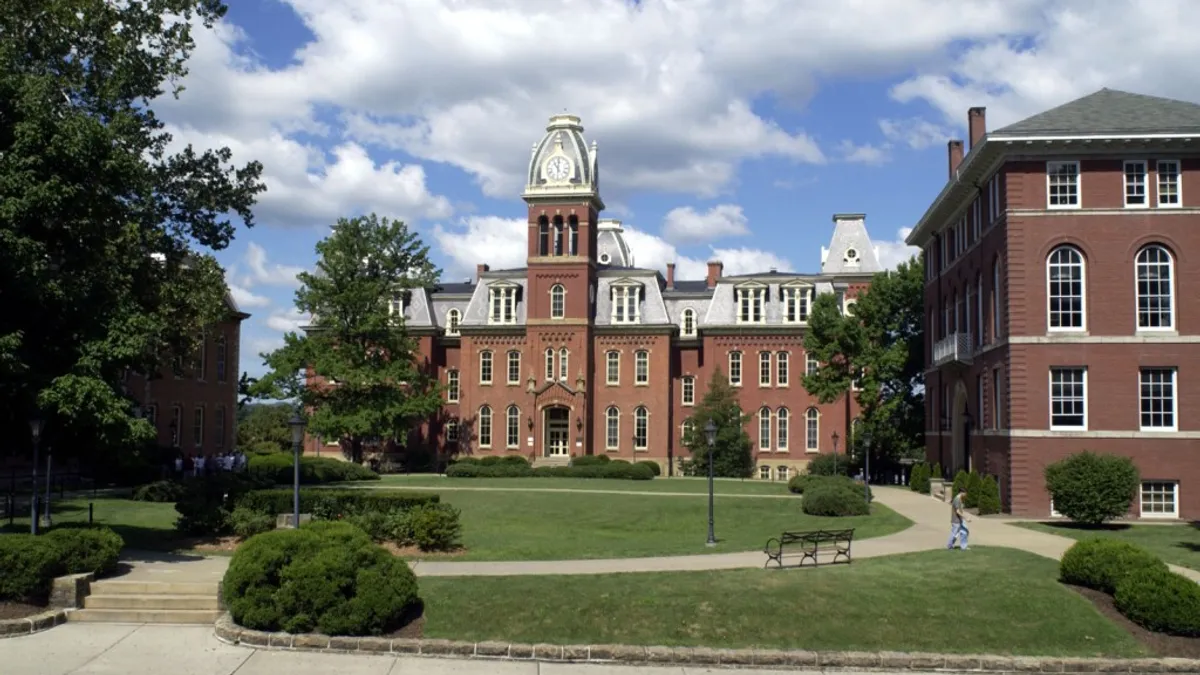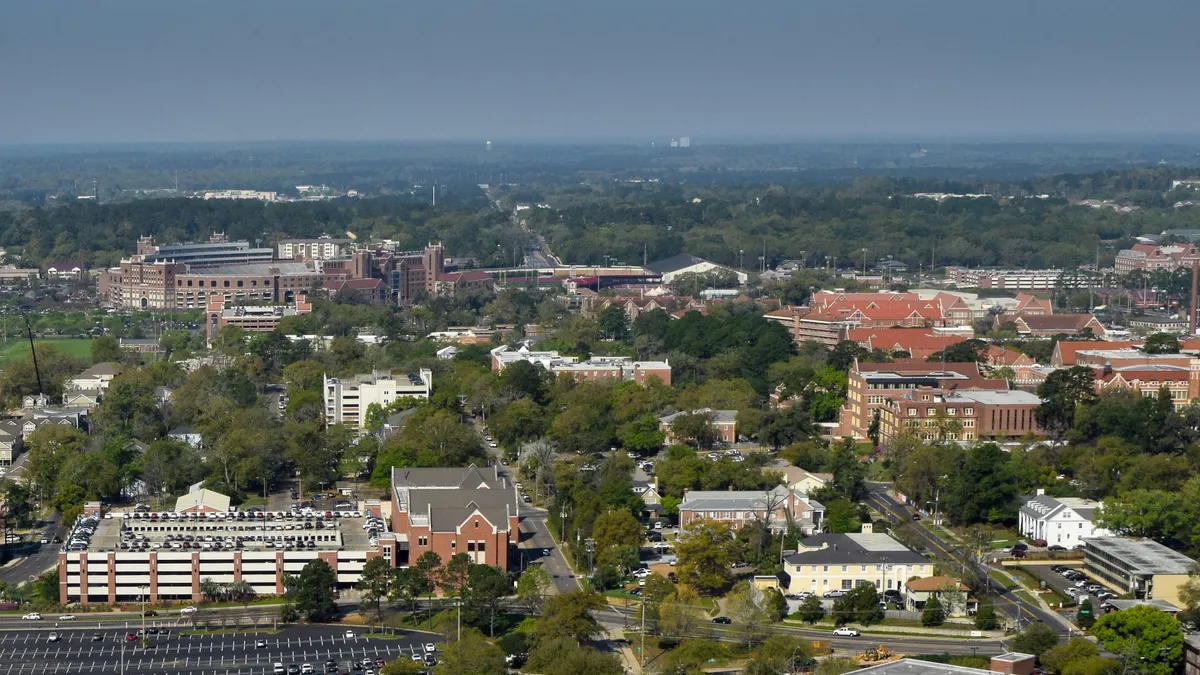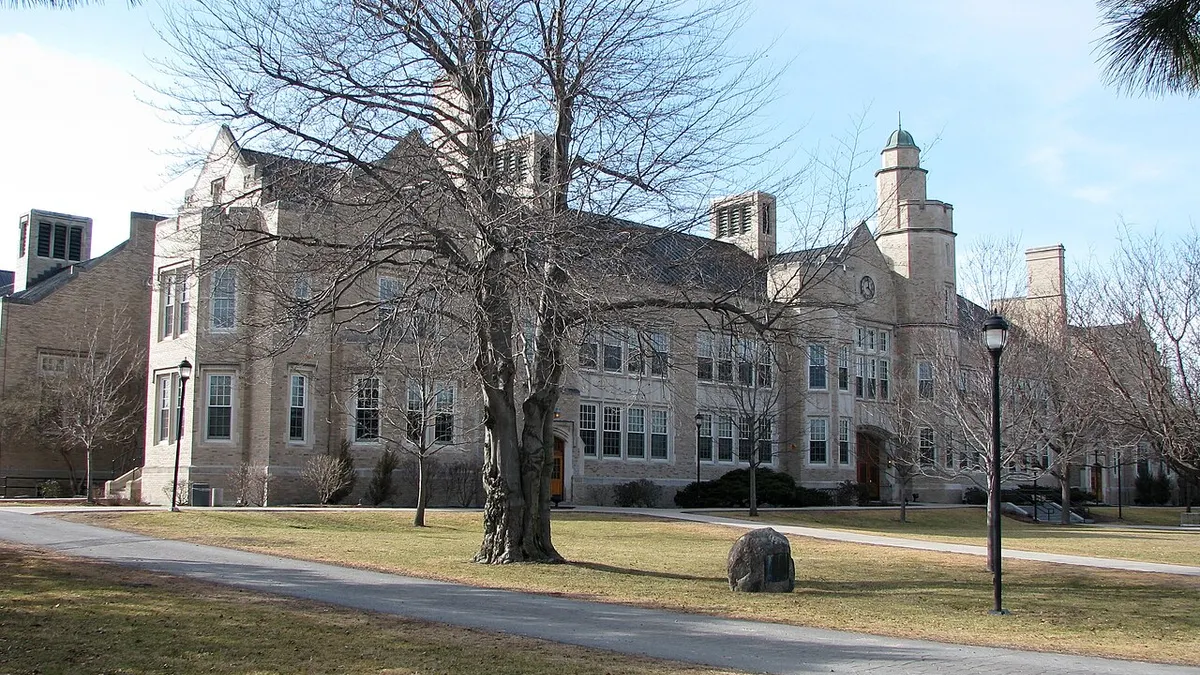West Virginia University will evaluate nearly half of its academic programs as it looks to remedy a $45 million budget deficit, in a precursor to some of them being scaled back or discontinued altogether.
The public flagship has already pursued austerity measures as it stares down the budget shortfall, announcing mergers of several of its colleges — most recently the College of Creative Arts and the Reed College of Media last month.
But more cuts are assured, both to its degree offerings and to faculty. University officials said Monday they had identified 590 full-time faculty member positions they will review under the departments up for evaluation.
“We have no choice,” WVU Provost Maryanne Reed said during a presentation to the campus Monday. “We must make hard decisions that will enable the university to strengthen its financial picture and position us for success now and into the future.”
WVU’s academic audit could be a model for other colleges that are confronting financial troubles, which are likely to persist amid enrollment pressures and federal COVID-19 relief running dry.
Other prominent institutions, like Rutgers University, are in the same boat as WVU. The New Jersey flagship, which faces a $77 million deficit, this month hiked tuition by 6%, almost double last year’s 2.9% increase.
At WVU, departments under review include law, chemistry, English, philosophy, communication studies, philosophy and world languages. As of fall 2022, the public flagship enrolls almost all of its 27,000-some students on its primary campus in Morgantown, and employs more than 3,100 part-time, full-time and extension faculty members.
The Morgantown campus offers 335 majors, according to WVU’s website. Its other two campuses, Potomac State College and WVU Tech, are excluded from cuts.
University administrators, along with consultancy RPK Group, picked programs to review in part based on enrollment trends dating to fall 2018.
Officials said many of these programs have seen declining student interest. For instance, civil and environmental engineering had 185 undergraduates majoring in it in fall 2022, down from a median 247 students majoring in the program between fall 2018 and fall 2021.
Programs with three or less years of enrollment data were excluded from review, as were those designed to help students who had some college credit but no degree graduate.
The university intends to tell individual colleges and departments about recommendations for cutbacks in mid-August. Appeals to preserve programs are slated to start later that month, and run through September.
WVU’s governing board plans to vote on cuts Sept. 15. And in mid-October, the university intends to inform faculty and staff who will be laid off or not have their contracts renewed.
Graduate students in terminated programs will be able to complete their degrees, according to Lou Slimak, WVU associate provost for curriculum and assessment. Undergraduate students will be able to finish their programs if they are halfway done with them, which takes about 60 credit hours, Slimak told reporters in a Tuesday phone call. Undergraduates who are not half done will be placed in another, similar degree at WVU.
Mark Gavin, an associate provost for budget, facilities and strategic initiatives, said on the call that “in all likelihood, it will not be a large number of programs that are discontinued.”
Gavin said the university could instead reduce the number of employees in a particular program or might not change anything about it at all.
“There are a range of outcomes that can happen,” Gavin said.
Academic restructuring came under consideration more than two years ago. WVU President E. Gordon Gee in 2020 publicly declared the university needed to adapt to financial headwinds and “a loss of public trust” in higher education.
Several months later, the university announced it would consolidate two of its colleges into a new College of Applied Human Sciences.
In addition to announcing another college merger in June, the university approved a fiscal 2024 budget that slashed about 130 faculty and staff positions, for savings of roughly $7 million. It also raised tuition almost 3%.
While Gee has primarily blamed the budget crunch on factors like falling enrollment and inflation, some pundits have pointed to middling state investment in public higher ed in West Virginia.
Still, some faculty remain skeptical of Gee’s vision.
Scott Crichlow, a political science professor, tweeted Tuesday that “what I am most struck by is Gordon Gee’s inability to articulate, beyond repetitive vagaries, what he wants WVU to be on the other side of these cuts. Without knowing that this process will be a mess.”
Last month, 55 people, mostly faculty members, signed a public letter stating that the administration was conducting layoffs in an unprecedented way.
University officials on Tuesday acknowledged concerns that the cuts could dissuade students and faculty from coming to WVU. But they maintained that the result of the “academic transformation” will be a tighter array of degree offerings that meet student and employer demand.
“We’re unsettled during this period, there’s no denying that, but we’re headed to a much better place,” Gavin said.






















